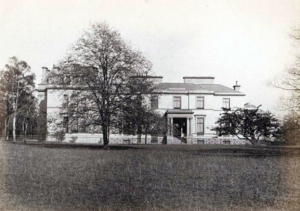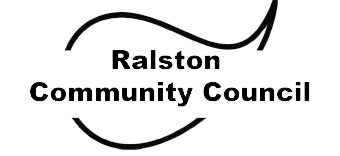Estates of Ralston
The modern settlement of Ralston takes its name from the ancient feudal estates of Ralphistoun (Ralph’s settlement), named after the younger son of the Earl of Fife, to whom the lands were gifted in the early 12th century. The feudal estates included the lands of Auldtoun (now Oldhall), Hullhead, Barshaw, Whitehaugh, Byres, Honeybog, Pennilee, Maylee and Ralstonwood.
When the use of surnames was adopted in the Scottish Lowlands, the descendants of the Earl’s younger son named themselves ‘Ralston’ after the estates. The lands remained in the Ralston family until 1704 when they were sold by Gavin Ralston to John, Earl of Dundonald, who conferred them on his daughter, Lady Anne Cochrane, when she married James, the fifth Duke of Hamilton. Their son sold Ralston in 1755 to William MacDowal of Castle Semple, an eminent Glasgow merchant and one of the founders of the Ship Bank there. His son, William of Garthland and Castle Semple, sold Ralston in 1800 to William Orr, son of a Paisley manufacturer who, with his brother, had made his fortune in the manufacture of linens in Ireland. Three years earlier, he had acquired from the Earl of Glasgow, part of the lands of Ingliston, on which he built an elegant manor house. Upon purchase of the estates, he merged all of them into one, which he called Ralston, and his manor house became the Mansion of Ralston. In 1840, James Richardson, a Glasgow merchant, secured the lands. His son, Thomas Richardson, enlarged the mansion and increased the size of the estate.
The Ralston estates were eventually carved up and sold as farmland in the late 1800s. The ruins of Ralston Mansion were demolished in the 1930s; however part of the original stonework forms an annex to the club house at Ralston Golf Club. The East and West Lodges on the Glasgow Road were the original gate houses to the estates.

Ralston Mansion (Photo: Thomas Annan)
Planned Village
In the early 1800s, the development of the textile industry in Renfrewshire resulted in the increase in road traffic across the county. The main road running through the Ralston estates was nothing more than a narrow dirt track. The original road ran from Paisley, through the then-village of Williamsburgh and across the tops of the Byres, Barshaw and Honeybog hills. When a programme of long distance road construction was introduced, a new road was built, snaking through the low-lying ground at the foot of the hills. The original track later fell into disuse and the new route became what is now the Glasgow Road.
Villas began to appear along Glasgow Road in the late 1800s, mostly in what is now the Oldhall district near Barshaw Park. A village-proper was established in the valley between the hills of Bathgo and Honeybog in the early 1930s as post-war residential development increased. Developers planned Ralston as a leafy haven for wealthy Paisley textile merchants, wishing to raise their families in a more rural setting beyond the burgh’s boundaries.
Most of the area’s original farmhouses were demolished to make way for the fledgling village. These included:
Oldhall (at the far end Oldhall Road, which was actually originally the path leading up to the farmhouse)
Rylees (which sat at the bend of Atholl Crescent – its path coincides roughly with School Road, leading down to Penilee Road, which like Glasgow Road, was a well-established track)
South Hillington (the most recent victim of Ralston’s expansion, which lay in ruin until 1973 when it was finally consigned to the history books to make way for Ossian Avenue)
South Ingliston (which lay in what is now Ralston Golf Course, just beyond the bend of Bathgo Avenue)
The Furnace (Originally number 18 Penilee Road, owned by Gilbert and Elizabeth Chalmers)
